An analysis of the relative movements of 18 tectonic ridges over the past 19 million years finds that the rate of seafloor spreading has dropped by about 40% on average globally. Plus, stars are getting naked, climate change is heating things up, and we review “Impact: How Rocks from Space Led to Life, Culture, and Donkey Kong” by Greg Brennecka.
Podcast
Show Notes
Neighbors caught stripping down star
- The University of Sydney press release
- “Discovery of post-mass-transfer helium-burning red giants using asteroseismology,” Yaguang Li et al., 2022 April 14, Nature Astronomy
Nova seen with MAGIC telescope
- MPI press release
- “Proton acceleration in thermonuclear nova explosions revealed by gamma rays,” V. A. Acciari et al., 2022 April 14, Nature Astronomy
Human evolution affected by planetary tilt
- Institute for Basic Science press release
- “Climate effects on archaic human habitats and species successions,” Axel Timmermann et al., 2022 April 13, Nature
- VIDEO: Climate effects on archaic human habitats and species successions (IBS Center for Climate Physics)
Warming oceans shuffles marine ecosystems
- Rutgers press release
- “Body size and food–web interactions mediate species range shifts under warming,” E. W. Tekwa, James R. Watson and Malin L. Pinsky, 2022 April 13, Proceedings of the Royal Society B
Seafloor spreading getting sluggish
- AGU press release
- “Evidence for a Global Slowdown in Seafloor Spreading Since 15 Ma,” Colleen A. Dalton, Douglas S. Wilson, and Timothy D. Herbert, 2022 March 25, Geophysical Research Letters
Transcript
We have finally reached the end of this week. Thank goodness.
And we’ll be on break next week, so of course, there are a bunch of rocket launches scheduled.
Let’s worry about that later. For today, we’re going to talk about stars getting naked.
Ummm… okay. And we’re going to look at some climate change stories.
And I’ll review a new book on space rocks!
All of this and more is coming at you, right here on the Daily Space.
I am your host Dr. Pamela Gay.
And I am your host Erik Madaus.
And we’re here to put science in your brain.
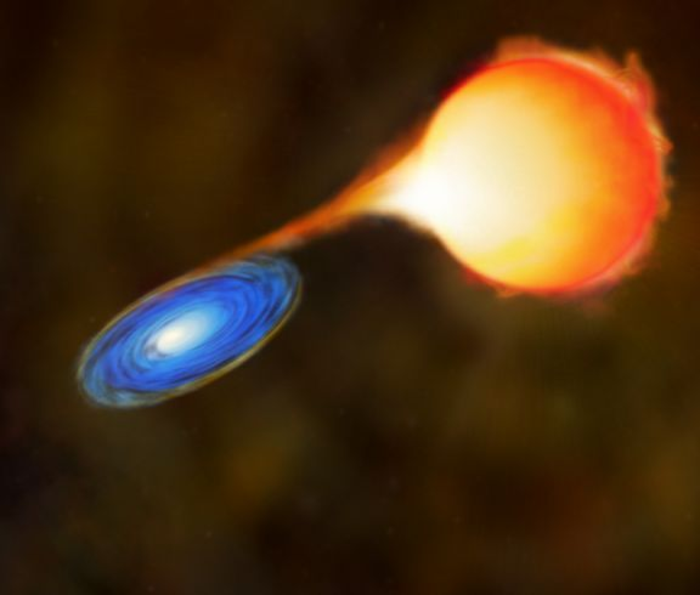
We define stars in a few different ways that basically come down to, observationally, we look at how luminous a star is and what temperature it is shining, while mathematically, we ask what is it burning in its core and what mass is required to make that happen. If you have a solar mass of material giving off super hot ultraviolet light while shining faintly, that’s going to be a white dwarf, and it is going to have a core of hot gas, just hanging out. Take that same mass, expand it out to the radius of something like Mars and start shells of material glowing around its core, and you know you are going to see something glowing bright and cool as a red giant.
Throughout its life, a star will change both in what it is using as fuel, and in how it looks, and these two things are directly related to a point. It turns out, alterations are possible but only if a star gets a little unasked for help from its neighbors.
Many stars are formed in multi-star systems, and when two stars are sufficiently close, weird things can happen. Our own Sun, luckily, is a singleton, so when it one day expands out to become a larger, cooler, red star, it may eat some planets, but it doesn’t have to worry about anything eating it. For stars with near neighbors, this expansion can, at a certain point, find that the material is gravitationally more attracted to the neighbor than to the star in which it started.
We can see lots of examples of stars stealing material off of one another as we look around the sky. What we hadn’t seen, until now, are the smaller stars left behind after their outermost layers have been stripped off.
Now, in a new paper in Nature Astronomy with first author Yaguang Li, researchers describe the discovery of these smaller stars. As Li puts it: It’s like finding Waldo. We were extremely lucky to find about 40 slimmer red giants, hidden in a sea of normal ones. The slimmer red giants are either smaller in size or less massive than normal red giants.
It’s always good when the universe provides us with examples of the kinds of stars we know we should see. The actual observations needed for this discovery, which used data from the Kepler telescope, are actually far more complicated than this simple story would imply. To get at the stars’ sizes, they used a technique called asteroseismology to see how waves propagate through the stars. This allows their physical properties to be precisely determined and opens the door for this remarkable discovery.
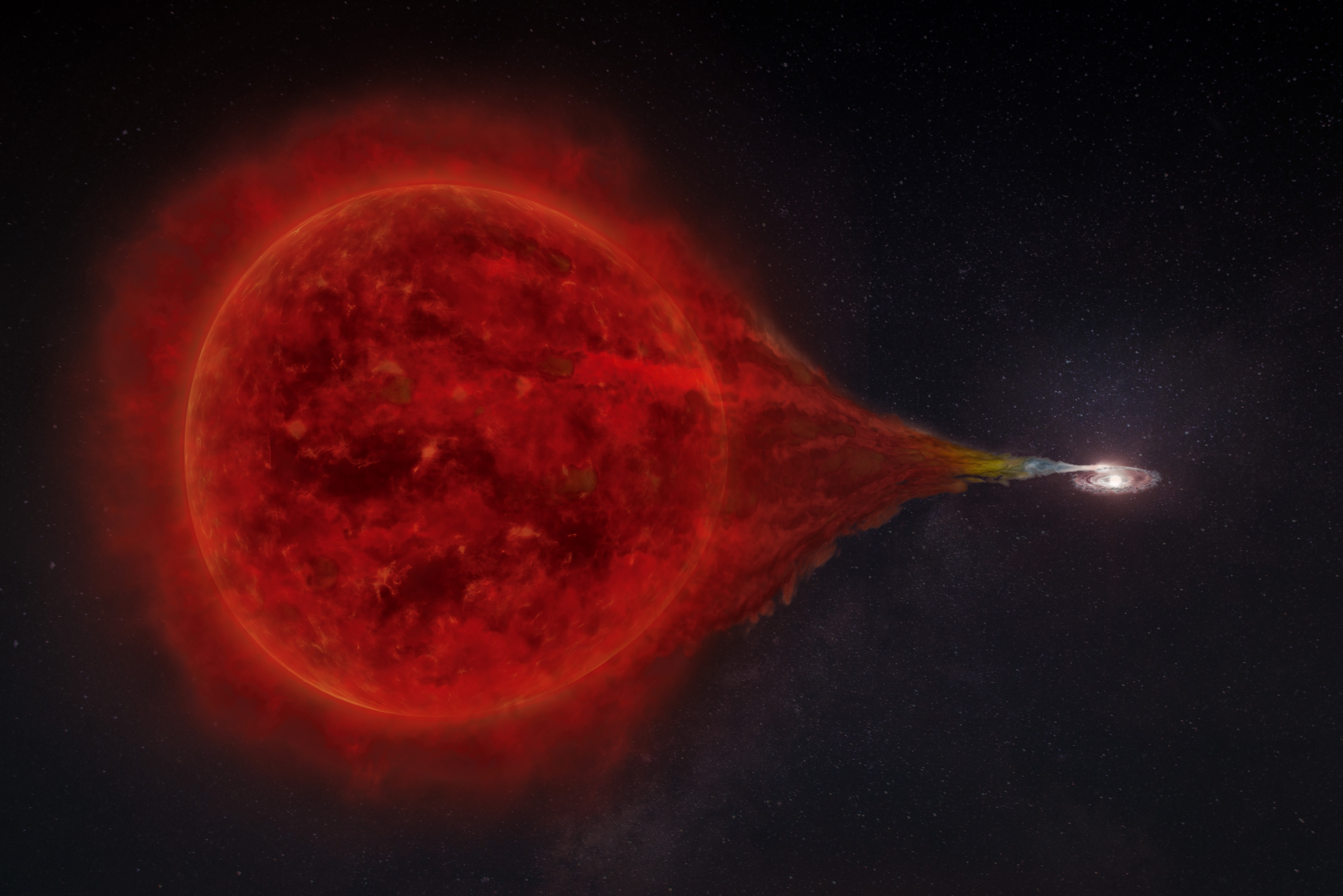
Speaking of stars stealing material off each other, new research has been published about the recurring nova system RS Ophuchi. This is a binary system composed of a red giant and a white dwarf, with the white dwarf constantly siphoning off hydrogen from the larger red giant. About every fifteen years, enough material accumulates on the white dwarf that it ignites in a small thermonuclear explosion called a nova. The last time this happened was in 2001.
Since then a new telescope called MAGIC or Major Atmospheric Gamma Imaging Cherenkov was built, and it was ready for the next nova in 2021. It is located at La Palma in the Canary Islands along with many other telescopes. This telescope specializes in observing extremely high-energy explosions in space, up to 30 teraelectronvolts. It does this by observing what happens when the high-energy cosmic rays from the explosions interact with our atmosphere, producing Cherenkov radiation as they slow down. You may know Cherenkov radiation as the blue glow surrounding spent fuel in nuclear reactor cooling pods.
What is unique about this telescope, or pair of telescopes rather, is its response time. Only 30 seconds after receiving an alert from other systems, the two telescopes were aimed at RS Ophuchi. What they discovered during the 2021 nova was massive – an explosion of 250 gigaelectronvolts. This is 100 billion times more energetic than visible light. It also showed that cosmic rays come from the nuclei of hydrogen atoms excited by the energy from these novae. However, according to David Green, one of the study authors: …they tend to play the role of local heroes – meaning to only contribute to the cosmic rays in the close neighborhood. The big players for cosmic rays are supernova remnants. The shock fronts created from stellar explosions are far more violent compared to novae.
So to get cosmic rays that affect other star systems you need supernovae, the even bigger explosions that are the final stage of a star’s evolution. The MAGIC telescope will continue to look for these.
This work was published in Nature Astronomy.
From the evolution of stars, we now jump wildly to human evolution and how it may be related to our planet’s wobble.
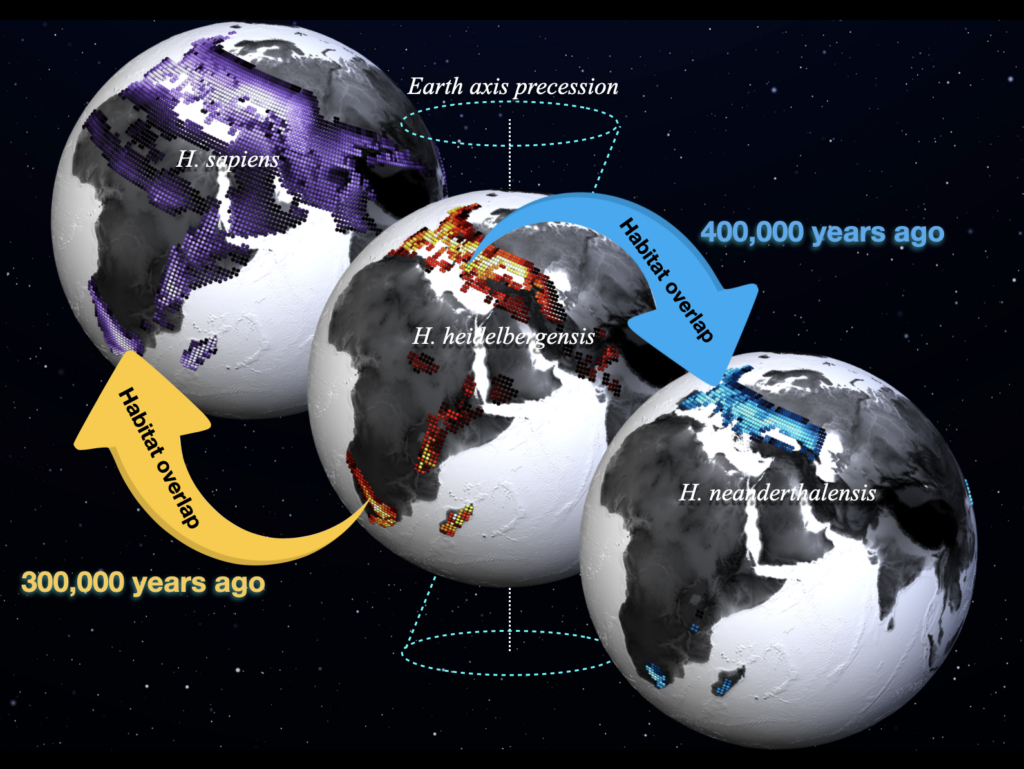
I need to say from the start — I am an astronomer, not a biologist, and in discussing this paper, I am trusting more than ever in the peer review system. The paper we’re discussing appears in Nature and was read by a group of experts who reviewed the work, asked questions, and, if this went as the normal peer review goes, may have even asked for a new analysis of the findings from new directions that made the results even stronger.
So, here we go.
Our planet has a bit of a tilt, and like a spinning top, how that tilt is pointed can change with time. With that change, the details that define our climate can change. Right now, our planet is closest to the Sun in January when the southern hemisphere is in the heat of summer and the north sees winter. As things wobble, that will change. So will other things. And the result is changes to where we see and don’t see glaciers and tropics and how the seasons change.
Different people like different temperatures, and that has always been true. It was especially true when there was more than one kind of human on Earth. We are Homo sapiens, and there is evidence of two other species, Neanderthals and Denisovans, that once shared the world with us. All three species branched off from the earlier Homo heidelbergensis.
And here is where it gets cool – or hot – depending on which species you’re tracking. Each of these peoples preferred different temperatures, and as our world’s climate changed, these people moved with the weather. A group of researchers led by Axel Timmermann pieced this story together by looking at both the fossil record and long-term climate models side by side.
According to Timmermann: Even though different groups of archaic humans preferred different climatic environments…This result implies that, at least during the past 500 thousand years, the real sequence of past climate change, including glacial cycles, played a central role in determining where different hominin groups lived and where their remains have been found.
Genetically, we know that there has been some mixing between all three of these populations. But how much did they really interact? That depends on how much the weather for the different groups crossed. Study co-author Pasquale Raia explains: The next question we set out to address was whether the habitats of the different human species overlapped in space and time. Past contact zones provide crucial information on potential species successions and admixture.
From their climate models, they matched results we’ve also seen in genetic studies. The Neanderthals and Denisovans appear to have evolved from the Eurasian populations of Homo heidelbergensis. Homo sapiens came instead from the south African population.
This work also looked at early populations, pre Homo heidelbergensis. In looking back further, co-author Elke Zeller explains that those earlier humans back one or two million years ago preferred stable climatic conditions. This constrained them to relatively narrow habitable corridors. Following a major climatic transition about 800 thousand years ago, a group known under the umbrella term Homo heidelbergensis adapted to a much wider range of available food resources, which enabled them to become global wanderers, reaching remote regions in Europe and eastern Asia.
As Timmermann puts it: Our study documents that climate played a fundamental role in the evolution of our genus Homo. We are who we are because we have managed to adapt over millennia to slow shifts in the past climate.
While they never come out and say it, I love the implication that being able to deal with lots of different climates was the thing that made our ancestors more evolved. Next time someone teases me for living someplace with snow, tornadoes, and summer heat, I’m just going to say it’s a sign I’m more evolved.
Climate changes don’t just affect us; they affect everything on Earth. Coming up next we’re going to talk about how climate change is even affecting marine life.
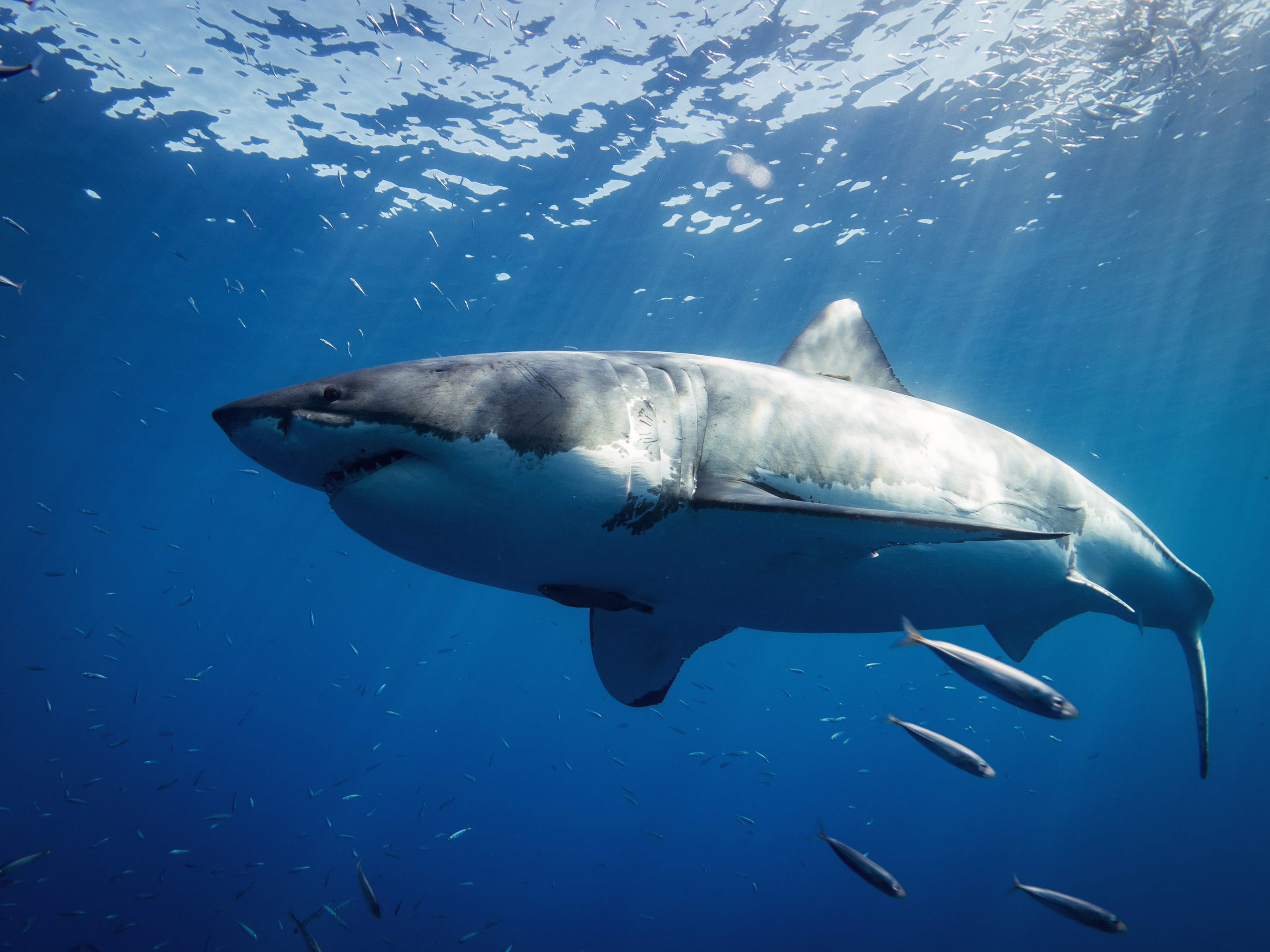
One of the most aggressive effects we’ve seen from climate change involves our warming oceans. Stronger hurricanes and dying coral reefs are but two of the issues that have cropped up in the past decade or so, but that’s not the only issue we’re going to have going forward. As the waters warm, the rest of the marine life is affected, and while a lot of studies have looked at the impact of climate change on individual species, a new paper in the journal Proceedings of the Royal Society B presented a possible outcome for the much larger oceanic food-web.
Of course, the news isn’t good, overall. Yes, larger species will shift their habitats to follow the right temperature of water, but those shifts may not result in the same abundance of a species. And shifting a species to another area is going to result in changes for any species already present. As study co-author Malin Pinsky explains: What that suggests from a fisheries perspective is that while the species we fish today will be there tomorrow, they will not be there in the same abundance. In such a context, overfishing becomes easier because the population growth rates are low. Warming coupled with food-web dynamics will be like putting marine biodiversity in a blender.
The team behind this study used computer modeling to analyze possible “trophic interactions”, where one species ends up finding food at the expense of another species. Lead author E. W. Tekwa notes: The model suggests that over the next 200 years of warming, species are going to continually reshuffle and be in the process of shifting their ranges. Even after 200 years, marines species will still be lagging behind temperature shifts, and this is particularly true for those at the top of the food web.
Fisheries will be moving their operations toward the poles of our planet as species search for cooler waters, and all of that shifting is going to result in a huge mess for the oceanic ecosystem as food sources also shift and even become more scarce over time.
Just another day on our warming Earth.

Changing species dynamics and locations aren’t the only things happening in our ocean, but not every story is about climate change messing up our world. Sometimes, our world changes for reasons that have nothing to do with humanity but everything to do with the planet itself.
Take plate tectonics for example. We have zero control over this process, and it’s probably one of the biggest factors in shaping the world. Weirdly, it’s one of the more recent theories to be developed and accepted, with textbooks changing while I was in grade school. But we don’t understand everything about the process of plate tectonics, and now we even have something new to grasp – seafloor spreading is slowing down.
Seafloor spreading is just what it sounds like: two plates are moving apart in the ocean, causing the crustal rocks to thin and allowing the warmer, molten mantle to rise up. At places like the Mid-Atlantic Ridge, this process creates new rocks, pushing the European and North American plates apart. Meanwhile, on the other side of the globe, the pushing from that process is causing subduction around the Pacific Rim, and that is where existing rocks are being destroyed as they are driven down into the mantle.
It’s a plate-eat-plate world, apparently.
Overall, plate tectonics keeps our planet at the same size, destroying older rocks to make new ones and leaving us with an incomplete record of our planet’s history. And all that destruction and creation also involves volcanoes, which then shape other aspects of Earth such as sea level, the carbon cycle, and atmospheric greenhouse gases.
Now, new research published in Geophysical Research Letters looks at how the rate of seafloor spreading has changed in the past 19 million years and possibly why it has changed. It turns out that the rate peaked for some ridges about 15 million years ago at 200 millimeters per year, and now it has slowed down, dropping by almost 100 millimeters per year in that entire 19 million year time. The study measured the spreading rates at eighteen ridges around the world, but most of the slowdown is occurring in the eastern Pacific. Overall, the drop in the average global rate was about 40%.
One of the possible reasons for this slowdown may actually be those subduction zones. Take the Andes mountains, for example, which are created due to subduction off the coast of South America. As those mountains continue to grow and rise up through volcanic activity, they also create pressure, pushing down on the crust as it gets heavier and heavier. That means that the subduction gets more and more difficult. Lead author Colleen Dalton explains: Think of it as increased friction between the two colliding tectonic plates. A slowdown in convergence there could ultimately cause a slowdown in spreading at nearby ridges.
Dalton notes that the increased friction cannot be the only cause of the slowdown since mountain growth is regional, and the slowdown is seen globally. Something might be going on with the mantle convection processes as well, and she hopes to collect more data and find the absolute rather than relative plate speeds to determine the complete cause.
And now, I’m going to review a delightful new book about space rocks, impact craters, and video games.
Review
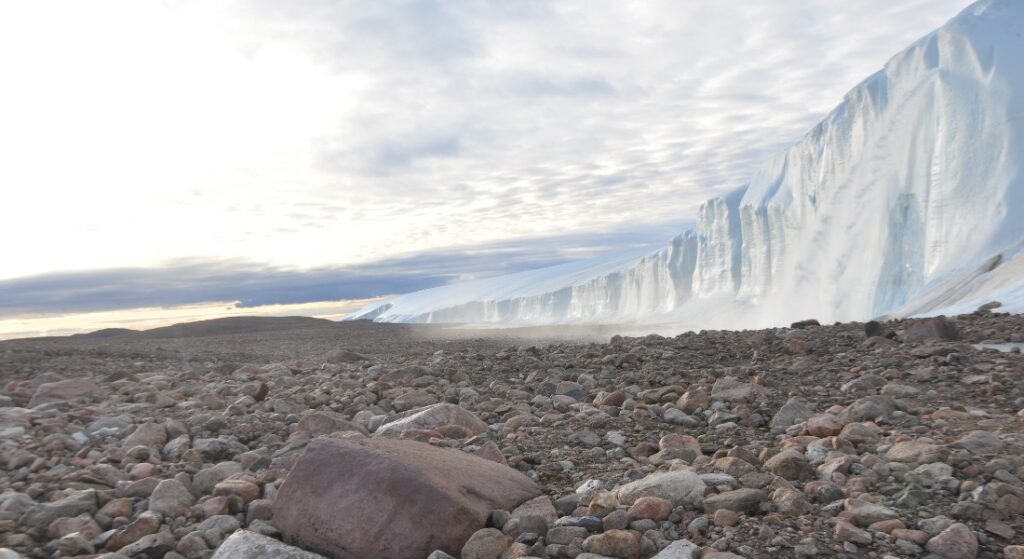
A few weeks ago, we brought you news of a newly discovered crater in Greenland. Hidden beneath a glacier, this ancient pockmark on our planet was formed when a meteorite struck the earth about 58 million years ago. This crater is large – about 30 kilometers in diameter – but its formation wasn’t an extinction event.
When we covered that story, it got me thinking about just how often our world has had metropolis-sized regions turned into bowls. Our planet’s surface is mostly water. What land we do have is constantly getting reshaped through weather and plate tectonics, and just finding old landscapes to go fossil hunting in can be a challenge. Even so, forty odd craters between 10 and 100 kilometers wide have been discovered. Forty may not seem like a lot, but there are fewer megacities on Earth than megacity-sized craters.
And when you start to realize that for every London, Lagos, or Beijing, there is a London, Lagos, or Beijing-sized crater… That is a new perspective.
And with this new perspective, I decided to journey down the rabbit hole and learn more about the meteorites that have literally left their mark on our world through the ages. On that journey, I discovered the newly published book, Impact: How Rocks from Space Led to Life, Culture, and Donkey Kong.
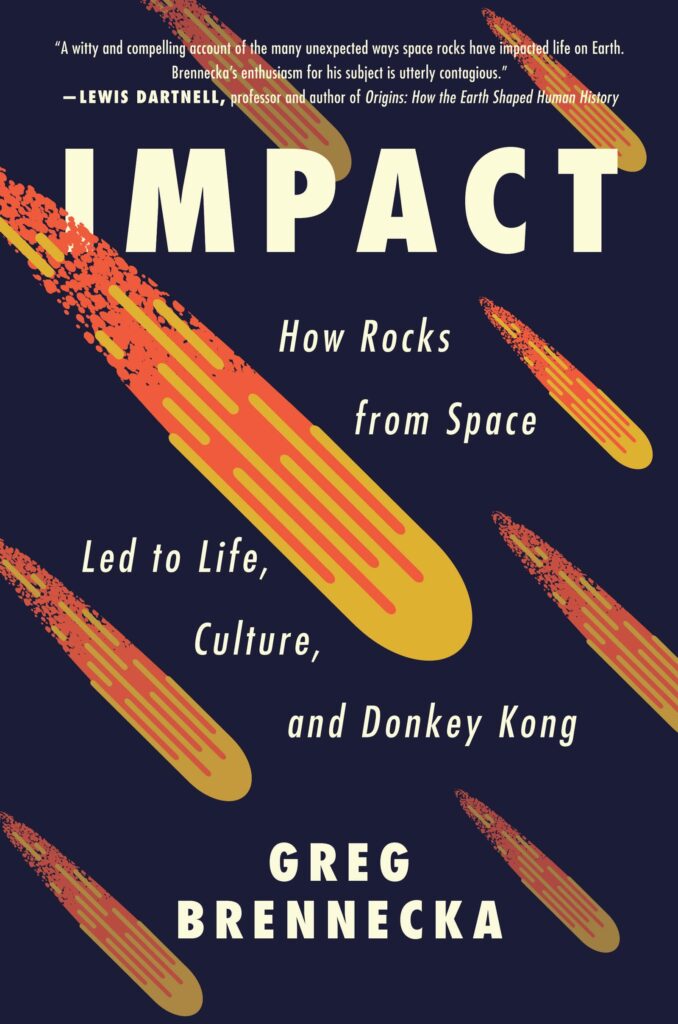
Written by Greg Brennecka, this book takes readers on a journey from that first great impact that helped shape the Moon and carries them forward to the latest in meteor science. With a 2022 copyright, I really do mean the latest.
Going into reading this book, I didn’t know what to expect. I hadn’t heard of the author, who is a cosmochemist at Lawernce Livermore National Laboratory, and while I have to admit I’m not sure how you can make asteroid impacts boring, science conferences have taught me that anything – even supervolcanoes – can be polished to dull exposition given sufficient academic treatment.
Folks, this book is not dull. What’s more, I’m pretty sure Brennecka could have talked about the most boring topics in science and still kept my attention with wordplay, sarcasm, and science.
Like many of you, I grew up on science books written by Boomers. The best books sought to be poetic or elegant in language. The personification of worlds we often use when discussing things together and the sarcasm that gets into a more frustrating analysis of data, it all got erased in words that were put out for the public. I grew up on Carl Sagan’s “we are all made of stardust” while thinking, “Dude, you’re just the recycled shrapnel of a star that exploded and somehow came to life.”
I am Gen X, and while I’m not sure if Brennecka would call himself a baby Gen X’er or an elder Millenial, I am here to tell you that his use of pop culture references and dark humor spoke to me. At times, I found myself reading pages about things I already know really well, just because I wanted to see what twist of language or novel analogy he would use. This book had me waking the house as I laughed out loud trying to read in bed.
Do not read this book in bed if you are surrounded by light sleepers.
The language was a delight, and then along the way, I got to fully explore the rabbit warren that is the cratered history of Earth and all the ways space rocks have influenced culture, religion, and even video games. I learned new details about how iron beads from meteorites made their way into pre-iron age rituals, and I’m not going to tell you how Donkey Kong is related to meteorites. You’re just going to have to read this book for yourself.
Published by Harper Collins, this 250-page adventure in space rocks is available online just about everywhere. It is entirely black and white, but the words are punctuated with photos and delightful cartoon diagrams.
This book is joy. Somewhat sarcastic, sometimes darkly humorous, joy. I loved it. Get it. You will love it, too, and have some new weird stories for the next time you see a meteor streak the sky while chatting at night with friends.
This has been the Daily Space.
You can find more information on all our stories, including images, at DailySpace.org. As always, we’re here thanks to the donations of people like you. If you like our content, please consider joining our Patreon at Patreon.com/CosmoQuestX.
Credits
Written by Pamela Gay, Beth Johnson, Erik Madaus, and Gordon Dewis
Hosted by Pamela Gay, Beth Johnson, and Erik Madaus
Audio and Video Editing by Ally Pelphrey
Content Editing by Beth Johnson
Intro and Outro music by Kevin MacLeod, https://incompetech.com/music/


 We record most shows live, on Twitch. Follow us today to get alerts when we go live.
We record most shows live, on Twitch. Follow us today to get alerts when we go live.